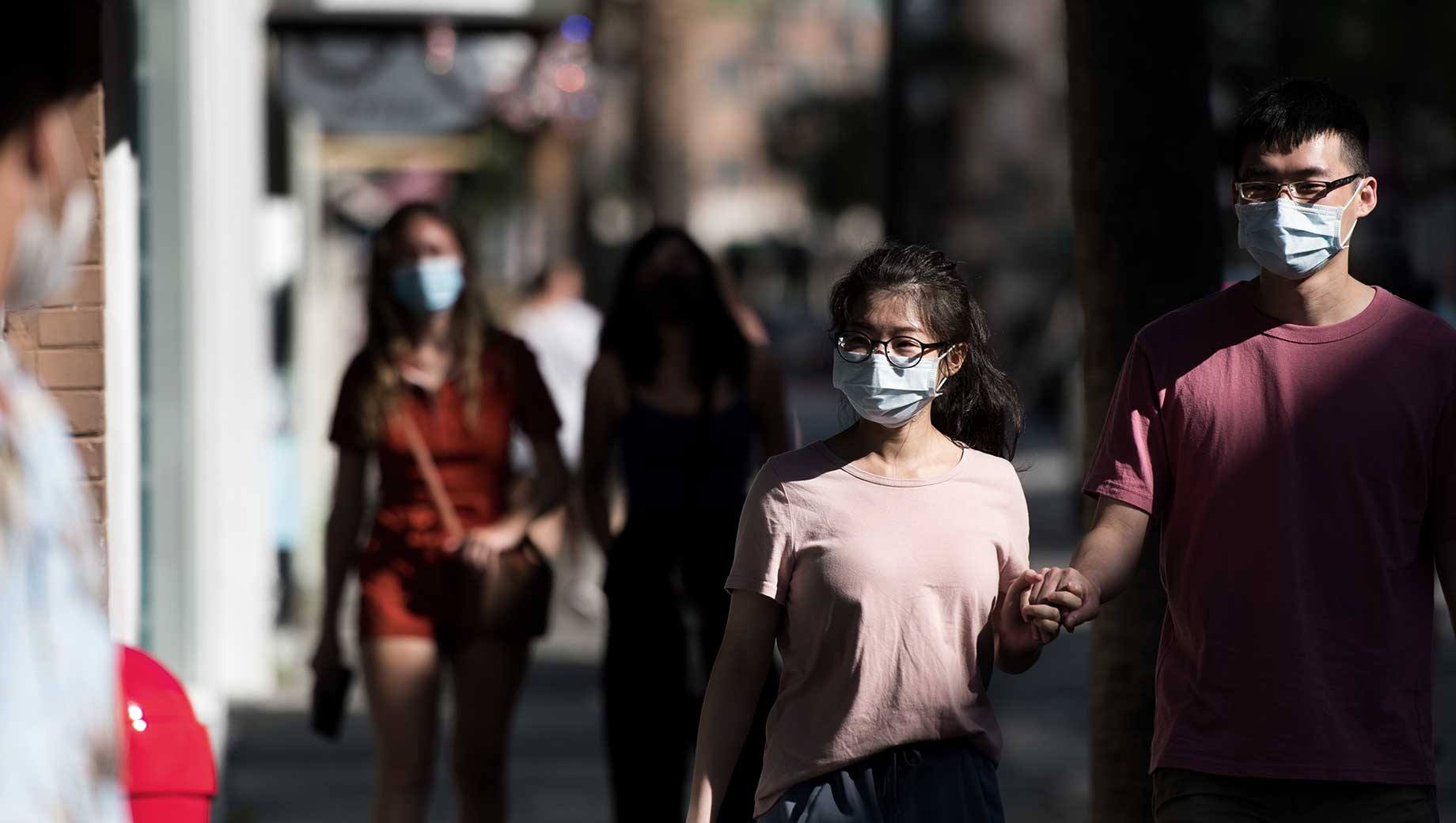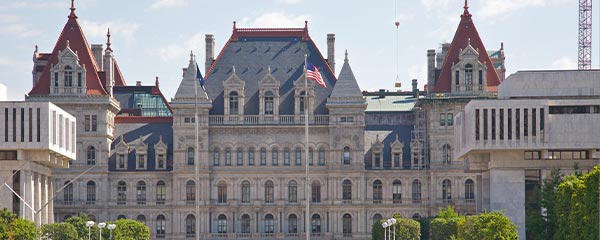Story Highlights
- New low of 70% avoiding events with large crowds
- 53% staying away from public places, 45% small gatherings
WASHINGTON, D.C. -- Americans are less likely now than at any point since the early days of the coronavirus pandemic to say they are avoiding events with large crowds (70%), public places such as stores and restaurants (53%) and small gatherings (45%). Though each of these behaviors has changed only slightly from late August, they represent significant declines from mid-to-late July and new low points for each of their respective trends since Gallup's initial March 13-15 reading. Still, the majority are avoiding public places and, in particular, large crowds.
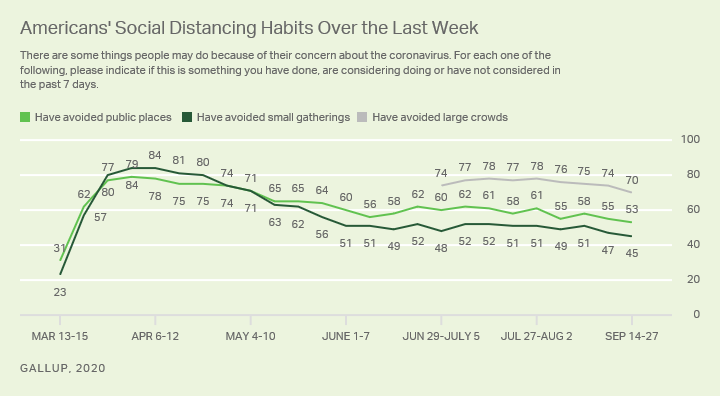
Line graph. Americans' social distancing habits over the last week. 70% of Americans have avoided large crowds. 53% in the U.S. have avoided public places. 45% of Americans have avoided small gatherings.
The latest data are from Gallup's September 14-27 online, probability-based panel survey tracking Americans' attitudes and behaviors related to the pandemic. If the percentage of Americans who avoid small gatherings continues to decline, it may be of particular concern as the holiday season approaches. CDC Director Robert Redfield recently warned U.S. governors that "small household gatherings" are contributing to the current rise in cases in many states and stressed that people should be wary of relaxing their adherence to social distancing guidelines during the holidays.
Asked how often they have practiced social distancing in the past 24 hours, 40% of Americans currently say they have "always" and 32% say they have "very often" done so. The combined 72% is virtually unchanged from the 73% who gave one of these responses in late August, but like the indicators reported above, the trend has tapered somewhat since mid-July.
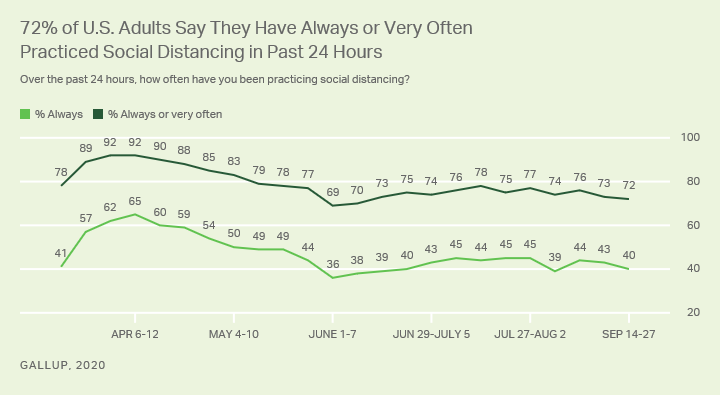
Line graph. Americans' frequency of practice of social distancing in the past 24 hours. 72% of Americans say they have done so always or very often. 40% say of Americans say they have always done so.
Face mask use has leveled off at just over nine in 10 Americans
The prevalence of face masks may be one factor in the recent tapering of Americans' social distancing behaviors. Mask use has become routine for the vast majority of Americans; since mid-July, at least 90% report having worn a mask when outside their home in the past week. Large majorities of Americans across demographic groups like age and political party now say they wear masks in public. A previous analysis from the Franklin Templeton-优蜜传媒Economics of Recovery Study has suggested widespread mask use increases Americans' confidence that they can avoid COVID-19 infection in public places.
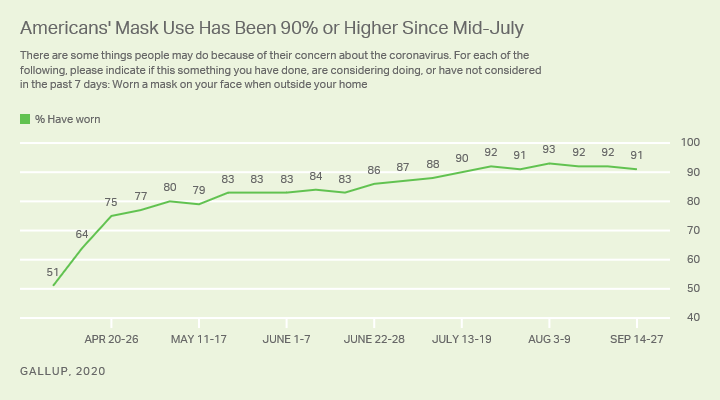
Line graph. The percentages of Americans who have worn masks in the last week. Currently, 91% of Americans say they have used a mask in the last week. Americans' mask use has been at 90% or higher since mid-July of this year.
However, Gallup's tracking polls have also demonstrated that Americans are much more likely to say they wear masks outside the home in indoor settings, such as offices or stores -- where they are often required to do so -- than in outdoor settings when they cannot socially distance.
Implications
As the pandemic has stretched past the six-month mark and precautions like social distancing and mask use have become more habitual parts of daily life, Americans' tendency to avoid contact with others outside their household has waned somewhat, though such practices are still common. The percentage who are largely isolating themselves by avoiding public places and small gatherings reached new lows in the most recent survey.
These trends correspond to others showing that more Americans are resuming some aspects of their pre-COVID routines. For example, one-third of U.S. workers (33%) currently say they are "always" working remotely to avoid coronavirus infections, down from about half (51%) last April.
However, coronavirus cases are currently rising again in much of the U.S. Many public health officials -- including leaders in the World Health Organization -- are hoping to avoid the most socially and economically detrimental responses, such as the lockdowns imposed when the pandemic began last spring. Their ability to deploy less disruptive containment measures may depend in large part on Americans' ongoing adherence to precautionary measures like social distancing and mask use -- even in circumstances such as small family gatherings or outdoor events, where they are not required to do so.
Learn more about how the works.
